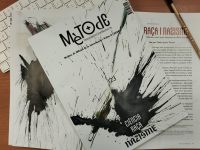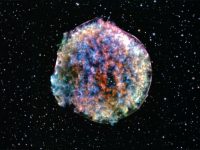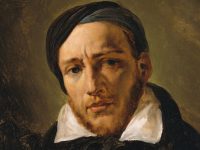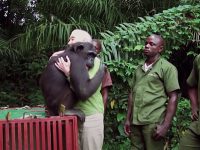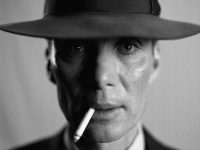Post-War Botany
The journey made by Joan Salvador and Antoine de Jussieu around Spain and Portugal
DOI: 10.7203/metode.79.2635

|
Between 1716 and 1717, Joan Salvador i Riera, an apothecary from Barcelona and Antoine de Jussieu, a professor of botany at Le Jardin du Roi in Paris, travelled the roads of Spain and Portugal, sometime by calash, sometimes on mule back, to make «botanical observations». This article provides a brief overview of the Salvador family and a glimpse of the journey made by these two naturalists. Keywords: Joan Salvador, Antoine de Jussieu, Spain, Portugal, travel. |
|||||
|
A family of enlightened Apothecaries In the early seventeenth century, the young Joan Salvador i Boscà (1598-1681), full of hope, left his hometown, Calella, for the jostling city of Barcelona. At just 18 years of age, he was admitted to the College of Apothecaries and at 28, in 1626, he married the daughter of his benefactor, the wealthy apothecary Gabriel Pedrol. He had been lucky. His enthusiasm went beyond his officinal-related obligations and he explored various fields of natural history and began a herbarium, as well as a collection of curious natural objects (De Bolòs, 1946). Shortly before his death, he was visited by the 24-year-old botanist Joseph Pitton de Tournefort (1656-1708) from Provence, who was making his first exploratory expedition to the Iberian Peninsula. Thus began the Salvador family’s naturalist vocation (Font i Sagué, 1908). Joan’s son, Jaume Salvador i Pedrol (1649-1740), took over the apothecary’s work, inheriting both the shop and the collections. He also inherited his father’s curious spirit and collector’s obsession. However, unlike his father, who was basically self-taught, Jaume received a formal education. In fact, he was educated at Montpellier, which was then the hub of medicine, chemistry and natural science in the western Mediterranean. His reputation was widespread, and thus Tournefort made his way to the Salvadors’ home in 1681, when old Joan Salvador was still alive. Indeed, on his way there, he was robbed by the angelets de les Alberes1 and it is said that he had to hide his money inside the black bread he carried in his rations, because there were thieves and brigands everywhere. These were not good times for travellers, especially if they got entangled in wild and little frequented places, as those daring naturalists did. However, on one of these expeditions, Tournefort reached Valencia, accompanied by Jaume Salvador. In gratitude, Tournefort maintained a close friendship with him throughout his lifetime, and was later to put his son, Joan, up in Paris. He also sent him many vouchers containing the dried plants collected during his famous expedition to the Eastern Mediterranean (1700-1702), which were added to the Salvadors’ already sizeable collection. In 1723, Jaume Salvador, along with his children, set up the first botanical garden in Catalonia, in Sant Joan Despí (De Bolòs, 1959). |
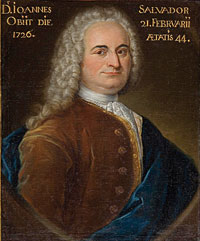 Institut Botànic de Barcelona Institut Botànic de BarcelonaJoan Salvador i Riera in an oil painting from his epoch. «Joan Salvador i Riera was an outstanding apothecary and a prominent naturalist. He was to raise the family to scientific heights that his grandfather Joan, who had died shortly before he was born, could not have imagined in his wildest dreams» |
||||
|
The third generation of this apothecary family started in 1683 with the birth of little Joan and, in 1690, with the birth of Josep, both sons of Jaume. Josep Salvador i Riera (1690-1761) was a reserved apothecary and a somewhat mediocre naturalist, but managed family affairs well and busied himself organizing the plant collections and the library, for which he had special furniture made (still preserved in Barcelona’s Institut Botànic). Joan Salvador i Riera (1683-1726), however, was an outstanding apothecary and a prominent naturalist. He was to raise the family to scientific heights that his grandfather Joan, who had died shortly before he was born, could not have imagined in his wildest dreams. Indeed he was the most knowledgeable naturalist of the family, despite his untimely death. He studied in France and Italy under first-rate teachers. He made botanical expeditions to Italy, France, Portugal, Spain, the Balearic Islands and, of course, particularly around Catalonia. It seems he was to write Botanomasticum Catalonicum, which had it not unfortunately been lost, would have been the first floristic catalogue of Catalonia (Camarasa, 1989). The family legend was to continue by way of Josep Salvador i Riera but neither his son, Jaume Salvador i Salvador (1740-1805), nor his grandson, Joaquim Salvador i Burgés (1766-c.1857) were to follow the family tradition. However, they maintained the collections, as did Jaume Salvador i Salvador’s widow, Francesca Burgés (d. 1830). In fact, their cabinet crammed with curiosities (along with the natural elements it also contained coins and archaeological bits and bobs) was the only museum in Barcelona during the eighteenth and early nineteenth centuries. It was located in Fusteria Street, which intersects the well-known Carrer Ample, near where the central post office now stands (Camarasa, 1988). The naturalistic vein of the Salvador family finally petered out when Josep Salvador i Soler (1804-1855), great grandson of Josep Salvador i Riera, lost his life on drowning in the Garonne near Agen. His descendants showed no particular interest in botany or science in general. Fortunately, the collections and the library were saved on being deposited by Silví Salvador, son of Josep Salvador i Soler, on the Bleda’s estate, a house in Sant Martí Sarroca near Vilafranca, Penedès. In 1937, amid the Spanish Civil War, Pius Font i Quer learnt of this, and negotiated the safe relocation of this valuable heritage to Barcelona’s Institut Botànic.2 |
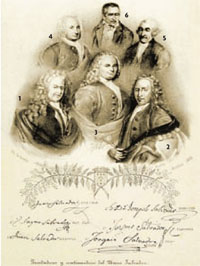 Biblioteca de l’Institut Botànic de Barcelona Biblioteca de l’Institut Botànic de BarcelonaThe Salvador family were undoubtedly the most famous Catalan naturalists. Etchings of the Salvador Museum founders and those who maintained it, from bottom to top and numbered: 1. Joan Salvador i Boscà (1598-1681). 2. Jaume Salvador i Pedrol (1649-1740). 3. Joan Salvador i Riera (1683-1726). 4. Josep Salvador i Riera (1690-1761). 5. Jaume Salvador i Salvador (1740-1805). 6. Joaquim Salvador i Burgès (1766-1857). |
||||
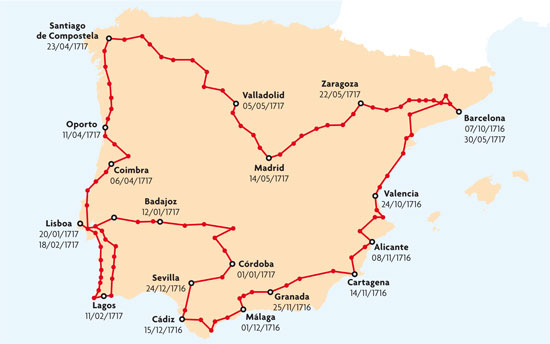 Ramon Folch Ramon FolchItinerary followed by Joan Salvador and Antoine de Jussieu during their expedition around the Iberian Peninsula. It shows the main stages and dates of arrival in the major cities visited. |
«The friendly face of the journey was reflected in the comfortable city inns, the convents or monasteries and the homes of some well-known friends, who welcomed them generously» | ||||
|
The setting of Salvador’s expedition In 1689, Jaume Salvador i Pedrol became a member of Barcelona’s Consell de Cent (meaning Council of One Hundred). He was an important citizen, owner of an apothecary store, museum and urban properties (at least one property comprising two hectares at Clot de la Mel3). After 1705, due to the War of Spanish Succession, scientific gatherings were held in the room behind the store, bringing together apothecaries, physicians and surgeons of the Austrian armies present in Barcelona (Camarasa, 2011). The war was to catch Joan Salvador i Riera by surprise in France, where he had gone to study aged just seventeen. There he remained until 1706, and in view of the course of the conflict he chose to disappear from the Bourbon realm and go to Italy. But he was to soon return to Barcelona, thus at the age of 23 he joined in with the half-war and half scholarly atmosphere of the room behind his father’s store. It must have been exciting for a young man like him. Certainly his heart must have been divided between the Catalans’ effusion for the Austrians and his sympathy for France inherited with his family’s tradition and time spent there and many friendships made in Montpellier and Paris. Years later, after his untimely death, his brother Josep maintained ties with Bourbon high authorities, including the Duke Lluís Enric de Borbó, brother of Philip V. This does not imply the Salvadors were supporters of Philip V (known as botiflers), but they were Francophiles.4 During the war, the Salvador family could only maintain contact with scientists from the countries forming the Grand Alliance, namely Austrian supporters. But after 1714, it was possible to resume relations with French scientists. Furthermore, in 1715, Joan Salvador was nominated as member of the Académie des Sciences in Paris. Thus, all told, it is not surprising that in 1716 he gave a warm welcome to Antoine de Jussieu (1686-1758), whom Joan Salvador had met previously in Montpellier. Jussieu arrived in Barcelona, accompanied by his younger brother Bernard and the artist Philippe Simonneau, to complete the Iberian expedition made by Tournefort years before. It was a decision taken by the Académie des Sciences, supported by the regent Philippe d’Orleans. France was euphoric over the Bourbon victory in Spain of 1714, and it must have seemed like venturing into their own back garden. Jussieu entreated Joan Salvador to accompany him. How could he refuse? He had to do it, and no doubt he was dying to go. In the year 1711, at the height of the war, he had been collecting plants in Mallorca. Now he had the opportunity to travel Spain and Portugal. The war was over, Barcelona was like a prison and he was 33 years old. So, on with the expedition! |
|||||
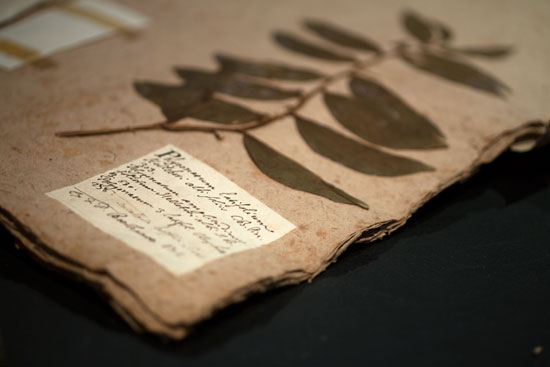 Ana Ponce & Ivo Rovira Ana Ponce & Ivo Rovira |
|||||
|
Journey through Spain and Portugal «Seventh day of October, departed from Barcelona by calash, two saddled mules and a groom travelling on foot (…) and arrived in Martorell having travelled a distance of four leagues (lleugues), for which one needs five hours by calash». Thus Salvador relates the beginning of this journey in his diary, an expedition which ended eight months later, on May 30, 1717. This diary, written in functional and straightforward Catalan, without any literary concern, bore a title that sums it up: An account of the journey through Spain and Portugal made by order of His Most Christian Majesty Louis XV and Monsignor Duc d’Orleans, regent of France, from October 1716 until May 1717 inclusive, the company being monsieur Antoine de Jussieu, Doctor of Medicine of the School of Paris, demonstrator of plants at the Jardí del Rei, Paris, member of the L’Académie des sciences, etc., monsieur Philippe Simoneau, engraver of this Academy, Joan Salvador, apothecary of Barcelona, Bernard de Jussieu, brother of monsieur le Docteur, medical student, having made several botanical, medical and other observations for the natural history, and some for geometry, etc.. In the eighteenth century, and especially after the war, travelling overland was quite an adventure. Salvador’s diary provides valuable evidence, as he kept careful notes on the route and incidents. One thing it does not say is that it was Salvador who financed the journey. His French grandeur called upon him and decreed it so, while his Catalan industriousness assumed the cost anonymously. We know how it is… The diary contains hardly any scientific observations, because that was Jussieu’s duty.5 But it is easy to imagine that the travellers’ conversations revolved primarily around these subjects of common interest. Indeed, after the expedition, the correspondence between Salvador and Jussieu shows this was the case. For example, the diary sums up their passage through Elx (November 10, 1716) somewhat succinctly («Then Elx came into view amid a forest of palm trees, not to be seen in such profusion elsewhere, not from San Remo to the banks of Genoa»), but in a later letter Jussieu writes to Salvador: «Comme nous n’avons pas pu voir les fleurs du palmier dattier, examinez les a votre loisir et faites nous une description de toutes les parties de la fleur et de ce que vous observerez dans la fructification», showing that they did in fact visit the palm gardens but did not see them in flower. Jussieu’s request was undoubtedly related to the controversial debate he had over plant sexuality with Sébastien Vaillant (1669-1722) at that time. Vaillant, curator of the Paris Jardin des Plantes, defended plant sexuality while Jussieu, in principle, opposed it. However, as he had some doubts he requested information firsthand from Joan Salvador, because Joan knew about date palms, as they grew in the family botanical garden located at Sant Joan Despí (Layssus i Layssus, 1970; Camarasa, 1995). Portugal was to catch the special attention of this group of travellers, probably because it was unknown and seemed more exotic. They entered by Elvas on January 14, 1717 and left by Moncao on April 20, i.e., more than three months later. Half of that time was spent in Lisbon and surrounding areas, partly due to interest and partly to recover in the city from hardships incurred on the way, which were not few: most resting stages had been spent in ventas (inns) and cheap shabby hostels. For instance, on November 15 at Mazarron he wrote, «… we put up at the most awful inn (…), the French landlord was drunk and threatened to kill us. We had a very rough night sleeping on the floor». And just a week later, on November 22, in Cúllar, near Baza, «…they wanted to make us pay three crowns just to cook our dinner and make up the beds, after our having purchased and brought everything (…) it is customary for all innkeepers to swindle travellers, especially foreigners». The essence of the expedition was trudging along muddy roads, eating bad food and sleeping on the floor or on straw mattresses. Salvador was to notice surprising details or curious things, comprising the signature note of the diary. For example, he states that «In the kingdom of Valencia, all the ceilings are plaster like in Catalonia» (November 10, 1716). Also, regarding the mineral wealth of Mazarron his entry (November 16, 1716) has details that reveal his pharmaceutical training «We went outside the town to see where they get “ochre”, this earth pigment is abundant here, all the fields are red (…) We went to the lead alum cave, that they call “hair” alum (…) The said alum is found in abundance mixed with vitriol, and on the walls there is another smaller kind. Before entering the cave, the rocks look like those in an iron mine while others look like magna and another stone that seems like calamita.»6 Indeed, the fishermen of Mazarron harbour «were all armed because of the danger of Moors, as too those in the town, because the Moors often come to land there». Otherwise, the spectre of recent war shadowed the travellers at all times. In Manresa, Perello (Tarragona), Alicante and Lleida desolation was palpable. «Many demolished houses can still be seen here», he says of Alicante on November 7. About Lleida, May 26, 1717 he says: «The city, demolished». Having just begun the journey on October 10, he explains that Manresa «… due to being burnt down in 1713, was devastated, with a wretched inn, where we had to sleep on the floor on a bit of straw». Of interest are the comments relating to Gibraltar, newly occupied by the British (1704), an act involving a pro-Austrian Catalan battalion. Salvador writes (December 11): «The English have greatly fortified Gibraltar, and have over three hundred cannons (…) The governor promised to let us climb the mountain, [but] later said he did not want us to, as we could see all the fortifications (…) In Gibraltar there were many Jews from the Barbary Coast». The friendly face of the journey was reflected in the comfortable city inns, the convents or monasteries and the homes of some well-known friends, who welcomed them generously. And, above all, the joy of collecting new plants, discovering landscapes and visiting unfamiliar cities. The diary is full of comments on monuments, customs and curiosities. He explains (November 4) how they make cakes in Ontinyent, or (November 26) how most of the columns in Granada cathedral bear signs that say: «Nadie se pasee, hable con mugeres, ni esté en corrillos en estas naves. Pena de excomunión y de dos ducados para obras pías» (Nobody may stroll, talk to women or huddle in these naves. Penalty of excommunication and two ducats for charitable works). He also writes in the diary: «The streets are very dirty, the bread is good and cheap (…) Lawyers, doctors, clergy and others go on horseback, mules, and many wear spectacles on their noses to appear more dignified». He found Lisbon wonderful but Valladolid banal (May 5, 1717): «… many people wear ruffs (…), but otherwise there is nothing special». We spent only one day in Madrid, like Segovia, and less than other cities». |
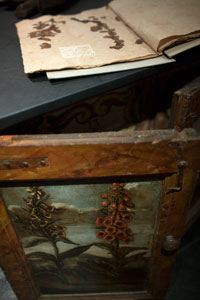 Ana Ponce & Ivo Rovira Ana Ponce & Ivo Rovira |
||||
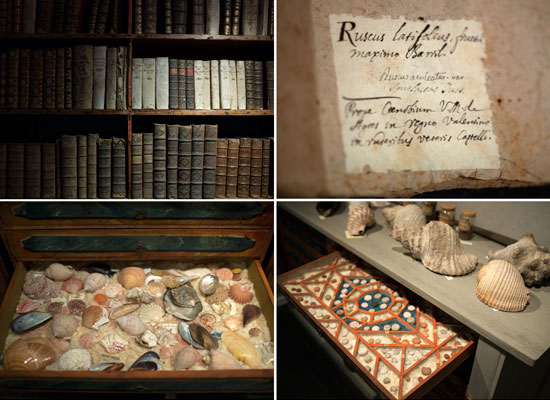 Ana Ponce & Ivo Rovira Ana Ponce & Ivo Rovira |
|||||
|
Three centuries of silence Joan Salvador did not publish his travelogue. We know that he copied it out, i.e., that there is a refined version, but that is all. Without doubt, his only intention was to keep a record of the journey, or maybe he was thinking of recording the dates and places for the labels of the ultimate Herbarium vouchers. However, with the passage of time, writings of this kind have ended up taking on greater interest as scientific documents, and more than just that. Indeed, many botanists have completed the exploratory works of Clusius, Tournefort, Jussieu or Willkomm7, but this notary-like description of the landscape, of the country as it was in the early eighteenth century is not to be found in any of their writings (Colmeiro, 1858). So Joan Salvador’s travelogue, like Baron Maldà’s Calaix de sastre or other comparable works, is now a valuable narrative document. This travelogue remained unpublished, in the Biblioteca Salvador library at Barcelona’s Institut Botànic, until 1972, when I organized its publication. I worked on three different manuscripts, all fragmented: the travelogue, the final version written up by Joan Salvador himself, and an anonymous copy of the final version, possibly by Pierre André Pourret (1754-1818), French botanist and biographer of the family (Pourret, 1844). Fortunately, it was possible to reconstruct the whole text from the three fragments. After their publication, the original manuscripts mysteriously went missing from the Salvador library. If they still exist, I hope they will be retrieved someday. |
|||||
|
|||||
|
1. Angelets de les Alberes – these «angels», would be called guerrilla resistance fighters nowadays. They had been putting up resistance to French domination of Roussillon and Cerdanya. (Go back) 2. In May 2013, after the writing of this article, Barcelona City Council located and purchased books, documents and objects pertaining to the Salvador Cabinet, recovered in 1937, the existence of which was unknown. Once catalogued and studied, these valuable materials will undoubtedly shed new light on the scientific and social lives of the Salvador family. (Go back) 3. They paid annual rates of «8 lliures, 15 sous i 6 diners». In 1835, Joaquim Salvador and his son Josep Salvador i Soler built 18 terraced houses, which still stand (2013) and form the most endearing part of this street: Carrer del Clot. (Go back) 4. An entry in Joan Salvador’s diary travel stirs up doubt about this. Referring to the town of Sax, he writes: «In this town, the people have always been good royalists, opposing and defending the place from imperial and English troops … » (November 5, 1716). «Good royalists» seems to reveal coinciding positions. Or perhaps simple caution, given the times…». (Go back) 5. A task only half done, because the full report of the expedition, repeatedly requested by the Académie des Sciences, would never see the light, due to Jussieu’s economic hardships and time-consuming medical practice to which he was devoted. However, among the documents recovered recently by the City Council (see note 2) Joan Salvador did make a list of plants collected during the expedition. (Go back) 6. LCalamita is loadstone, the old name of magnetite; alum is a double sulphate of potassium and hydrated aluminium, while lead alum also includes ferrous sulphate; vitrol, described in the context of the site, was just iron sulphate, ochre or red ochre is a red iron oxide, used for painting. (Go back) 7. The German geographer and botanist Heinrich Moritz Willkomm (1821-1895), assisted by the Danish botanist Johan Martin Christian Lange (1818-1898) published, between 1861 and 1880 in Stuttgart, Prodromus Florae Hispanicae the first complete modern flora of the Iberian Peninsula. (Go back) |
|||||
REFERENCES
Camarasa, J. M., 1988. «El gabinet de curiositats de la família Salvador». Barcelona Metròpolis Mediterrània, 9: 143-147.
Camarasa, J. M., 1989. Botànica i botànics dels Països Catalans. Enciclopèdia Catalana. Barcelona.
Camarasa, J. M., 1995. «Salvadorianae, ii. Les Jussieu et les Salvador: deux familles de naturalistes au debut du xviiie. siècle». In Layssus, Y. (ed.), 1995. Les naturalistes français en Amerique du Sud, 69-102. 118e Congr. nat. Soc. hist. scient., Pau, 1993.
Comité des Travaux Historiques et Scientifiques. Paris.
Camarasa, J. M., 2011. «Botigues i rebotigues d’apotecaris». In Garcia Espuche, A. et al., 2011. Medicina i farmàcia. Barcelona 1700.Institut de Cultura, Ajuntament de Barcelona. Barcelona.
Colmeiro, M., 1858. La botánica y los botánicos de la penínula hispano-lusitana. Impremta de M. Rivadeneyra. Madrid.
De Bolòs, A., 1946. «El herbario Salvador». Collectanea Botanica, 1: 1-8.
De Bolòs, A., 1959. Nuevos datos para la historia de la familia Salvador. Real Academia de Farmacia de Barcelona. Barcelona.
Font i Sagué, N., 1908. Història de les ciències naturals a Catalunya. La Hormiga de Oro. Barcelona.
Layssus, J. and Y. Layssus, 1970. «À propos de voyage d’Antoine de Jussieu en Espagne et au Portugal (1716 - 1717)». Comptes-Rendus du 94e Congrès National des Sociétés Savantes (Pau 1969), sciences, 1: 25-36.
Pourret, P. A., 1844. Noticia histórica de la familia Salvador. Impremta d’Antonio Berdeguer. Barcelona.
Salvador, J., 1972. Viatge d’Espanya i Portugal. Edicions 62. Barcelona. Edició de Ramon Folch Guillèn.

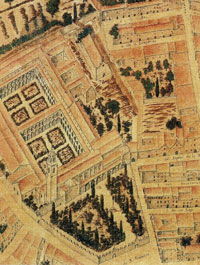 Tomàs Vicent Tosca i Mascó
Tomàs Vicent Tosca i Mascó